KASI Sunspot Telescope (KSST)
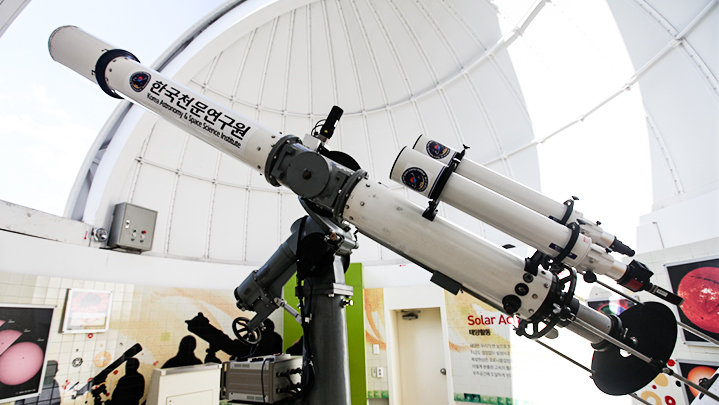
KASI has maintained a sunspot observation from 1979 by using a refracting telescope having 20cm diameter with 3m focal length. Its reflected disk image of the Sun has a diameter of 15 cm which shows an highly resolved image due to its long focal length, so that the details of sunspots can be well distinguished under a typical seeing condition.
White Light Picture
Camera observation is also performed by using a small refracting telescope installed at the lateral side of main telescope. The camera is Nikon D-100 which can set manually mode. Typical exposure time is ~1/1000s. When we take picture, the telescope tracking need to be off to determine the east-west line. It needs to adjust the focus slightly repeatedly to obtain clear picture because it’s hard to identify the clear limb due to the small size of the Sun in the camera.
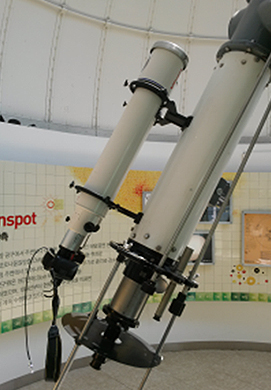 Telescope for the camera shot |

Camera |

Filter |
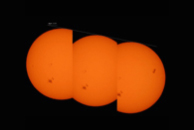
Continuous shot under no tracking which is needed to determine the EW line of the Sun. |
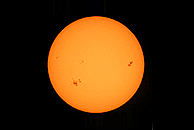
Collected image of the Sun after the adjustment the ES line. |
Observation of Sunspots using a Projection Plate
Convective motion around and inside the sunspot is suppressed due to the strong magnetic field. The suppressed convection transfer less amount of energy compared to the non-spot region. The temperature around the sunspot is ~ 4,000 which is lower by 2,000 than the non-spot region. The corresponding brightness ration is 2:10 which is sufficient to distinguish the spot region by naked eye. The observer sketch both the umbra and penumbra, and have to pay attention not to skip the small spot. The observer also have to pay attention not to skip a single-separated spot which will be amplified by 10.
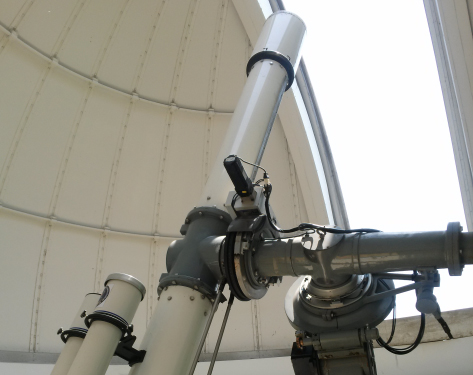
Sunspot telescope |

Projector |
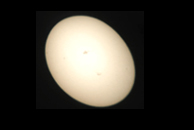
The image of the projected Sun |
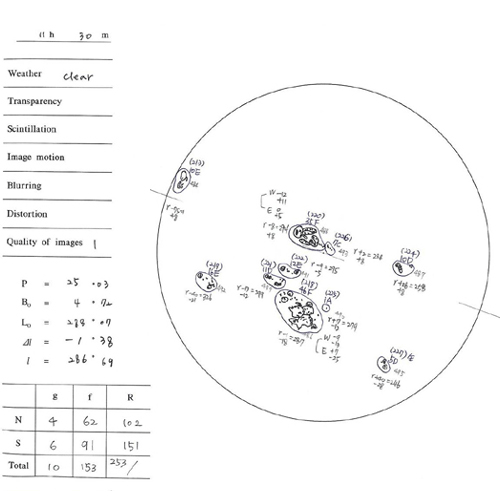
Example of sketch
Solar surface with many complex sunspot at the 29 Oct 2003 when the severe Halloween storm occurred.
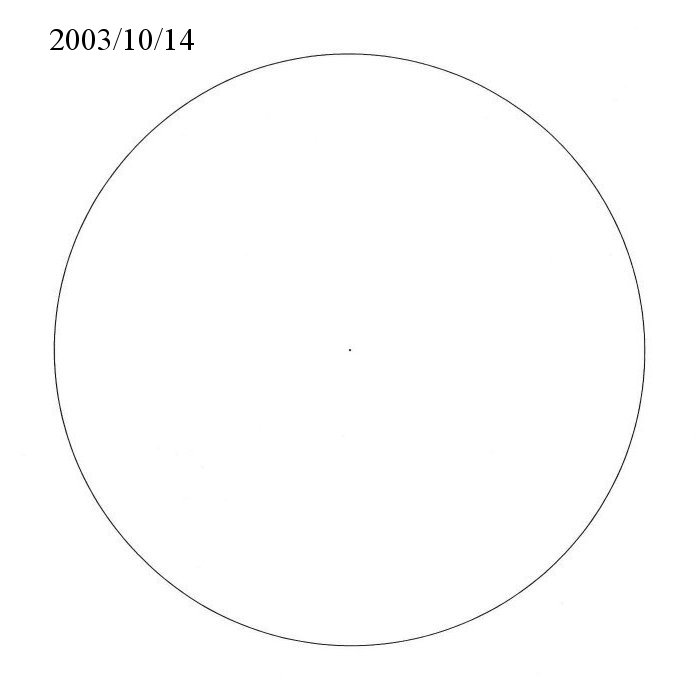
Example of movie
from 10/14 ~ 11/04 sketches
Sunspot number
The definition of observatory relative sunspot number is sum of ten times the group number (g) and individual number (f) scaled to the 60% value of Locarno reference observatory. The scaling factor between our number and the reference number is so called ‘personal reduction coefficient (k). The sunspot group composes a singular colony which can be distinguished from other spot group. Phenomenologically, it composes a singular magnetically active region. The region of factor 10 on the group number reduces the deviation when the sunspot number is only the total of individual number. The group number should be consistently defined in the observatory because only a difference by one leads the ten in the sunspot number. However, this deviation may be significantly reduced by using whole network data.
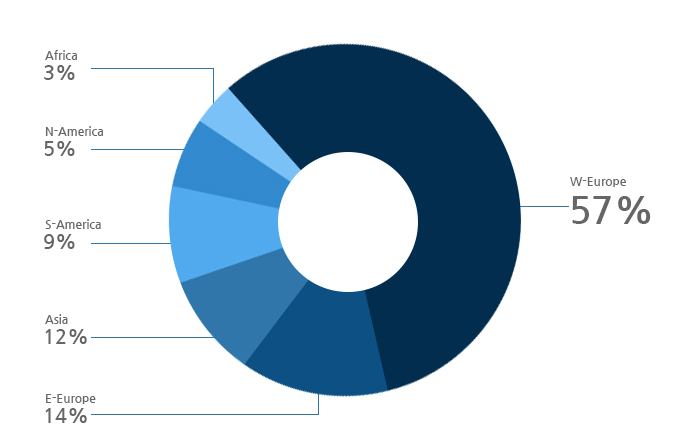 [ Regional occupation of the number of observatory ]
[ Regional occupation of the number of observatory ] 
International sunspot number (gray) and KASI relative sunspot number (black). Two curves are well synchronized. Difference between two sunspot numbers is moderately large at the minimum period. This is because the International sunspot number has its own process treating the very small number in the solar minima whereas the individual observatory only count the number.
